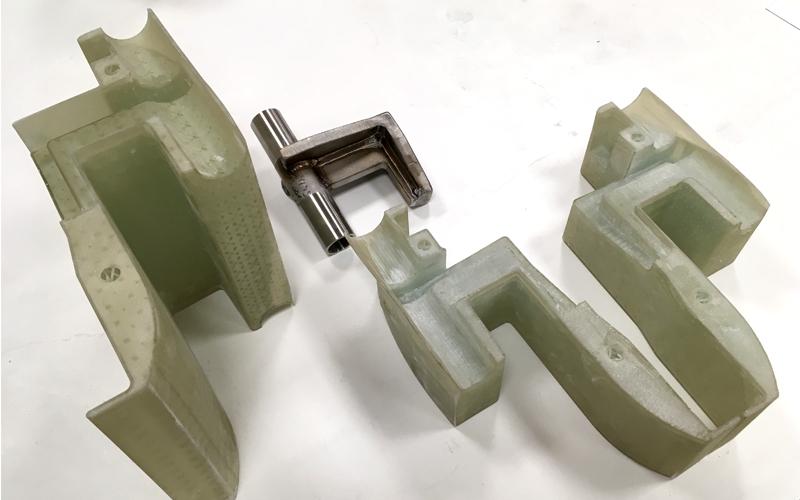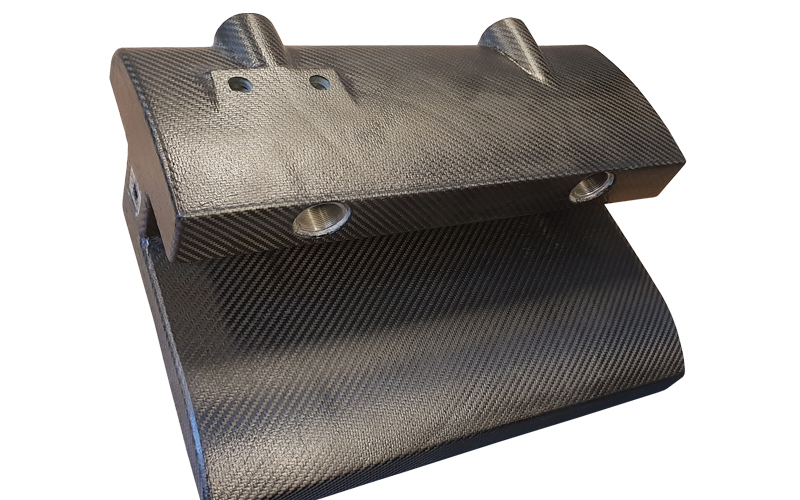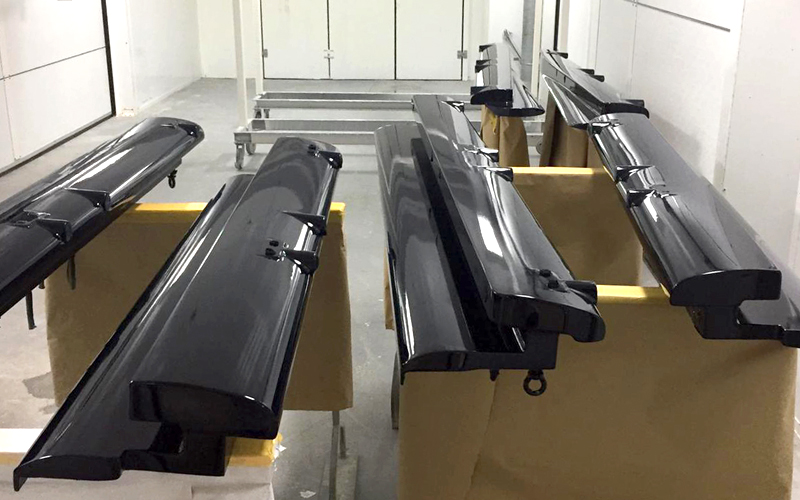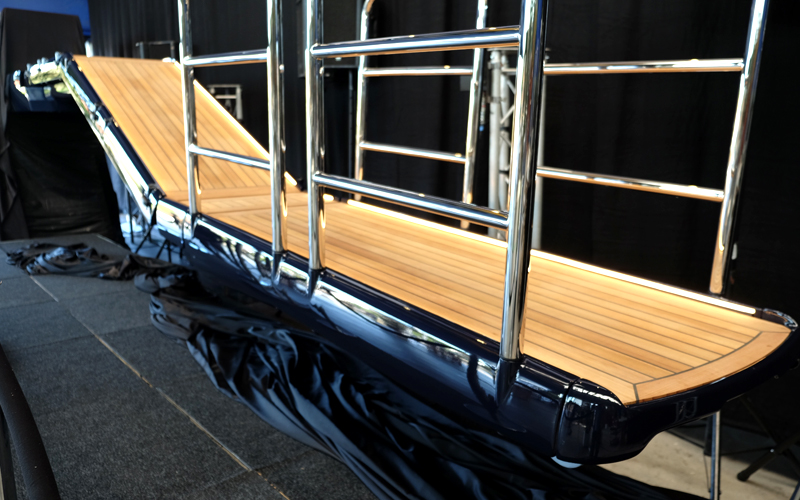Worlds most exclusive and largest superyachts are build in The Netherlands, a country which plays a leading role in building steel and aluminum yachts. Large hull doors, hatches, boarding platforms and passerelles are traditionally built in steel/alu as well which is quite a challenge when it comes to making complex, double curved, geometry.
Akerboom Yacht Equipment is a dedicated co-maker Royal De Vries Shipyard, Royal Van Lent Shipyard and of other renowned yacht builders. In 2019 Akerboom, the leading producer of superyacht (hull)doors, hatches and passerelles, developed a ‘new standard’ for superyacht passerelles, a fully automated luxury gangway which provide access to the aftdeck. These type of products, often called ‘outfitting items’, are tailor made for each yacht which has significant consequences on production costs and lead-time. Being an industry leader renowned for continuous innovation Akerboom did not hesitate when the idea was raised of 3d-printing superyacht parts.
What can additive manufacturing do for the yachtbuilding industry?
Fiberneering was approached by Akerboom to help shed light on how additive manufacturing, or 3D-printing, can be used to manufacture (carbon)reinforced parts more efficiently, minimize the number of parts and reduce assembly operations.
Akerboom is specialised in producing steel and aluminum moving parts for the marine industry, specifically hydraulic systems. Fiberneering, having developed their large format 3D-printing technique and is specialized in custom composite applications, was the obvious party to take on the aesthetical finishing, the covers, of the passerelle.
Benefits of 3d-Printing in FRP-3D Resin
For these passerelle covers, but also for various other outfitting items, 3d-printing of large parts using Fiberneering’s FRP-3D resins has some significant benefits for yachtbuilders:
- The FRP-3D resin formulation makes the material resistant against marine environments, UV-light, salt water and common used cleaning agents onboard.
- The 3d-printed parts, due to their composition specifically formulated for proper (chemical)bonding with epoxy based laminates, are well suited for fiber reinforcement with glass-, aramid- or carbon fiber.
- The ‘hardness’ of the resin makes it possible to polish the parts to a high gloss finish, making the parts very suitable for use as molds without the need for additional coatings.
- Our 3d-printing method enables fast production of complex custom parts without the conventional high up-front investment in plugs and molds.
- Various parts which would otherwise be produced seperately, in this case the housings and ducting for the led lighting, are printed in the same cycle, reducing assembly operations and parts.
- Non-releasing geometry which with conventional composite manufacturing cause challenges are no issue with 3d-printing.
Combination 3d-printed core with carbon fiber reinforcement
The initial reason for producing these covers of carbon fiber was not so much a matter of reducing weight but more a ‘print thru’ issue. This print-thru phenomenon, or unwanted markings of the laminate fibers due to temperature changes, is obviously not acceptable for superyacht parts. The use of a certain combination of laminates and resin can eliminate this unwanted marking. However, because these parts are subject to temperatures ranging from 100°C to minus 20°C, and build-up stresses between laminate and printed core could not be ruled out completely, it was decided for the longer and larger parts to only 3d-print the smaller inserts, plugs and molds. The more complex smaller parts (the stancion bases f.i.) are entirely made with 3d-printed cores.
Combination of 3D-printed cores and molds
With conventional composite manufacturing the non-releasing geometry of the led-rails, the stancion pots and internal details would have resulted in having to produce multiple molds for each of the seperate covers, dozens of molds in total. In order to finally produce 1 passerelle!
By smart engineering for additive manufacturing and by using 3d-printing to produce the parts we were able to efficiently and quickly manufacture superyacht quality passerelle covers while avoiding high investments in tooling.






0 Comments